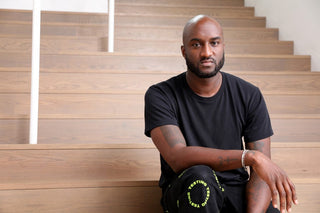He isn’t original. He’s a copycat.
These are common sentiments expressed about Virgil Abloh. Yet for the past weekend, Virgil has been celebrated and championed — a NikeLab Recreation Center pop-up, Louis Vuitton pop-up, DJ appearances, and a gala featuring Blood Orange to gear up for his first highly anticipated exhibit “Figures of Speech” at the Museum of Contemporary Art Chicago. Art critics question the exhibit for arriving too soon in Abloh’s career to be honored a retrospective and called it a ploy for clout because of his influence. However, the intention, intricacies, and details of the immersive exhibit would not have been possible if this was executed postmortem and Abloh was not involved. Without him, a higher institution could have risked co-opting the culture, but Virgil Abloh, Michael Darling (chief curator), and Samir Bantal (exhibit designer) touched all areas of the exhibit execution: curation, design, merch, and public art for inclusion. Abloh has formed himself as a brand and his brand is culture.
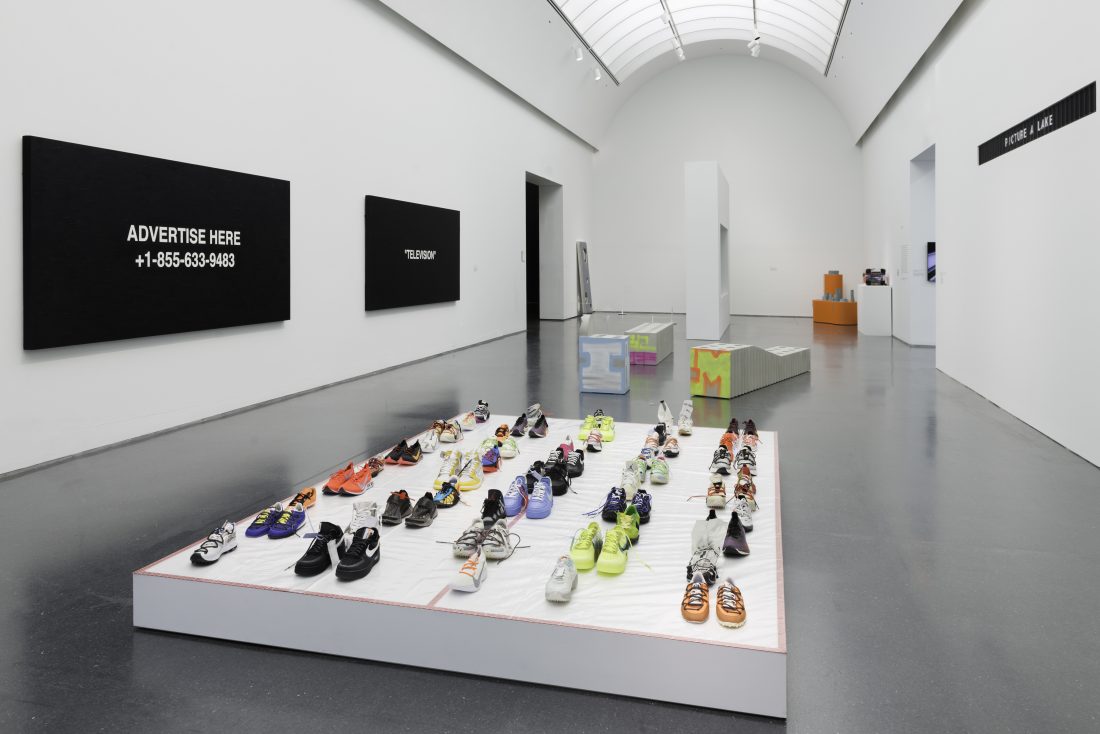
In the morning of a press review panel with Abloh, Darling, and Bantal, there wasn’t a swarm of “streetwear” publications around as I expected. Most attended for the brag of access. Some as fans of art. But all wondered, how did a 38-year-old who has only been a ‘fashion designer’ for six years get a 15-year museum retrospective? After all, Abloh was just named the artistic director of Louis Vuitton menswear a little more than a year ago and introduced his solution to streetwear luxe with “Off-White” in 2012. Before that, his experiences included being a Creative Director for Kanye West’s creative agency called Donda, co-founder of conceptual brick-and-mortar RSVP Gallery, and of course, a DJ under the alias “Flat White.”
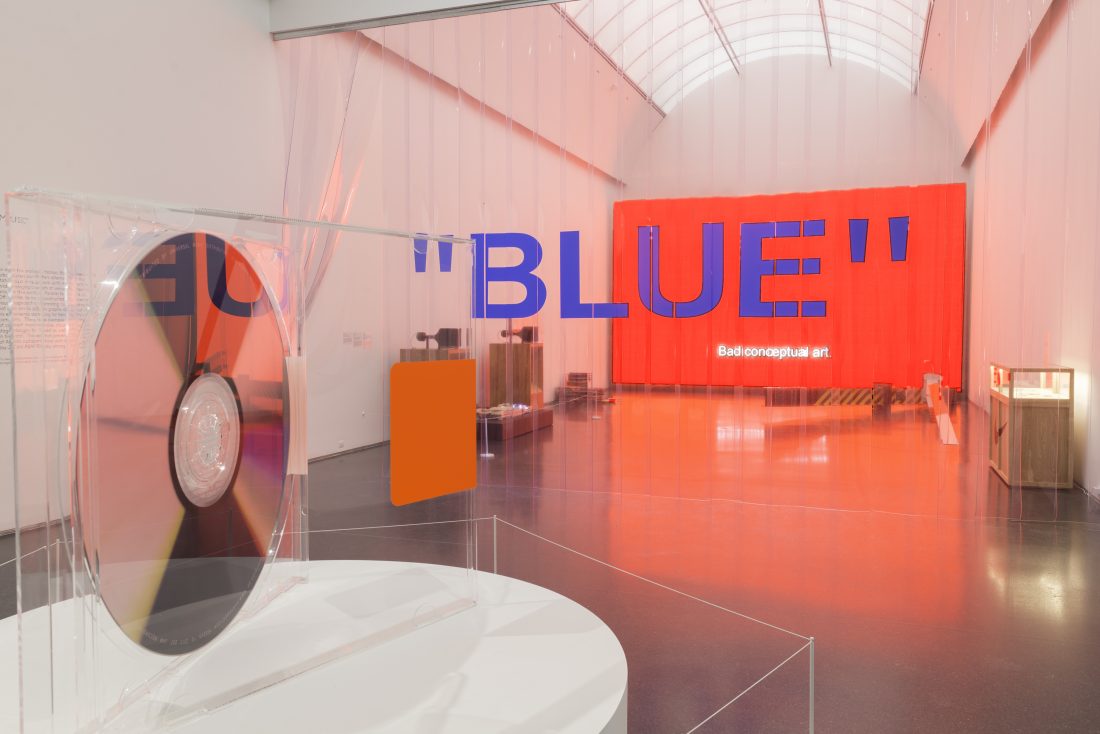
Abloh’s most viral achievements surround the hype of sneakers and his contributions in the hip-hop realm. But despite his newness or modernity, how commercial or popular he is, his entire resume is impressive and vast — a complete artistic spectrum from fashion to graphics, interior to industrial, commercial, advertisement, and art — churning out “work” at the pace of social media. Considered a “king of social media influencers,” Abloh’s world consists of a steady stream of under-the-microscope criticism. Since “The Ten” collection with Nike, the media has paid more attention to his every move — each sneaker release, OFF-WHITE season, collaboration, and DJ gig. His brand has become part of a culture that we want to buy and participate in. After his appointed role at Louis Vuitton began, the world has rigorously weighed the meaning of black representation in a fashion house, involuntarily making him a leader in diversity.
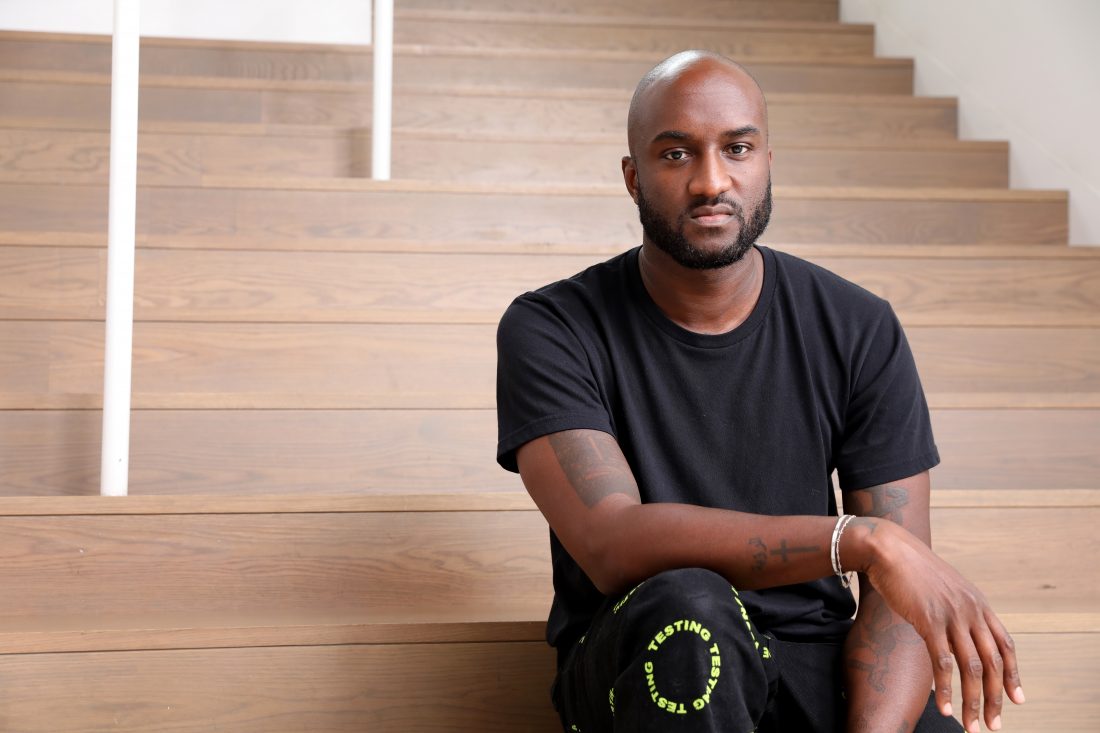
Throughout the curation of “Figures of Speech,” Abloh continuously assessed how a self-described non-traditional artist like himself could fit into the modern art museum landscape. With critiques left and right, surveying and forming conversations around his creative pursuits and how it redefines is the exact mystery and beauty of Abloh’s genre-bending work and what this exhibition focuses on. But honestly, “Figures of Speech” isn’t a plea of acceptance for the art purists to take him seriously or a means to gain clout on your social but a dedication to the youth of Chicago.
In Chicago, notoriously known for gun violence and police corruption but busting at the seams with both legendary and emerging talent, Abloh aims to redefine certain reference points of identity like North vs. Southside, Cubs vs. Sox, Louis Vuitton vs. Fat Tiger Works, The Magnificent Mile vs. Wicker Park, suburbs vs. city, etc. He wants to turn them into “public markers” where dreamers are made and access is available — juxtaposing location with what is readily available for the youth. Only a few blocks from the MCA is The Magnificent Mile, known for luxury shopping and the flagship stores Virgil, Kanye, and friends would use as meet-ups to hang out and dream of access and inclusion. Because of Abloh, and his notoriety surrounding youth and streetwear culture, “Figures of Speech” will invite museums to become part of a daily dialogue, especially for the youth of color who may have felt unwelcomed before due to elitism or intimidation. Plastered across the main windows of the MCA are the words “CITY HALL,” reminding people that the museum is a civic space.
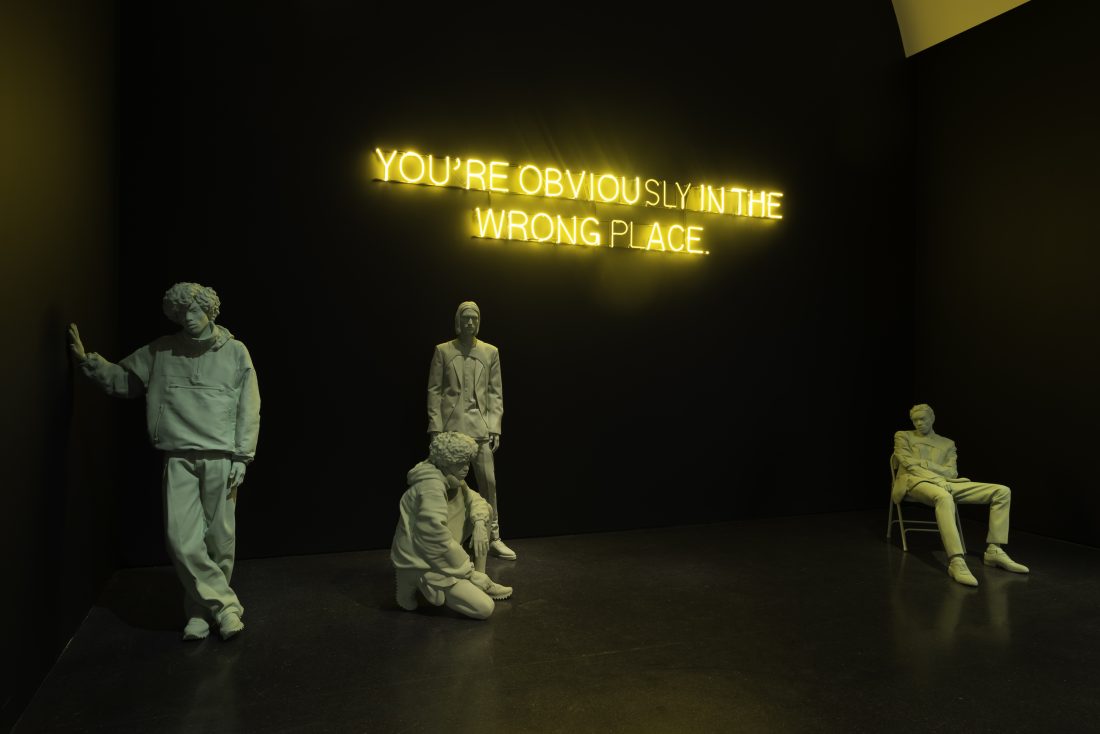
The exhibit extends his reach into a space that takes its context beyond luxury fashion, streetwear hype, celebrity models, and hip-hop, but surveys his work as a whole to better understand his vision, intention, precision, historical awareness, and cultural sensitivity. This 9-part exhibit moves through different themes, such as “Early Work,” “Fashion,” “Music,” “Intermezzo,” “Black Gaze,” “Design,” and “The End,” encouraging the experience further with “Public Art,” including graffiti sprayed CTA trains reminiscent of New York City’s MTA in the 70s. There is even a Virgil Abloh store called “Church & State,” holding all exclusive merch to cater to streetwear aficionados. Every youth will see a part of themselves in his work and his story. The 15-year narrative of his work was specifically curated to serve as “cheat codes” for the new generation. The youth will appropriate these commodities — the history of Pyrex Vision, Off-White archives, Chief Keef x Supreme Tee that displays a Pan-African themed box logo, prototype sculptures and ceramics, samples of Nikes, then subvert the intended meaning and make it reflect to fit their own subcultural identity. The “copycat” approach that Abloh adopted.
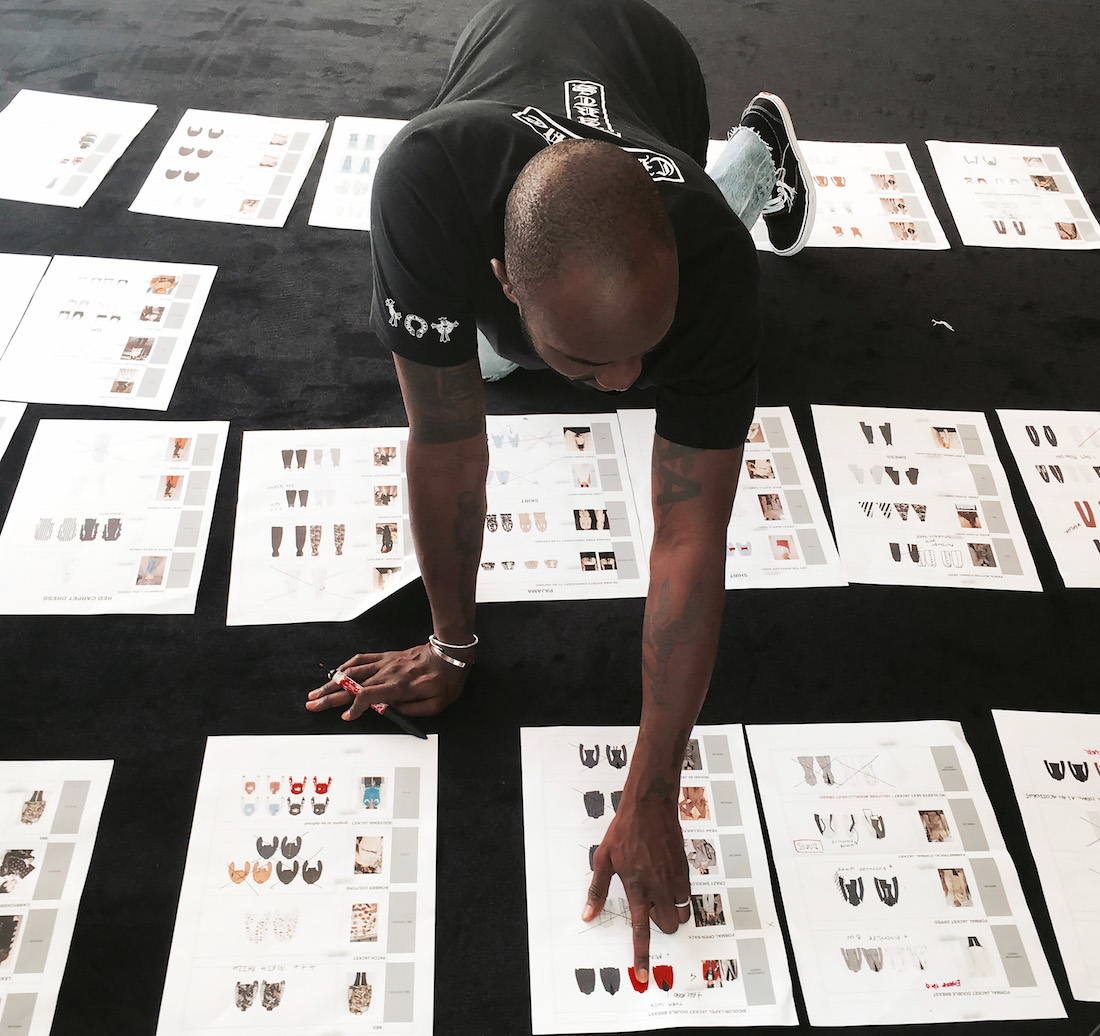
Abloh is continuously critiqued for “stealing” or reappropriating but he leads a disruptive approach to design, altering 3-5 percent of an item that is traditionally labeled to make it new. His genre-bending — a new clash between commerce and art — comes from the ethos of streetwear, in which high culture is appropriated or altered, to create something fresh and new. While some see this new realm of streetwear access as complete commodification of the culture, it should be seen rather as an opportunity. It is a mark for cultural progress.
Finally, an exhibit that represents what is happening right now — honoring and giving representation of a black man, the power of influence and self-made characters. Additionally, the exhibit allows streetwear culture to be presented in a different light other than a subculture, consumerism, or niche marketing, but rather a serious art movement based on absorbing and recognizing things that already exist and pushing them further along. It is not always recognized that streetwear operates with roots of Andy Warhol or Marcel Duchamp, but streetwear has always been part of contemporary art: the white or blank tee used as a canvas to repeatedly screenprint and sell iconic imagery or deconstructed sneakers that challenge what their intended use is. What Abloh has created in “Figures of Speech” is widening and truly exposing the limitless capacity of streetwear culture compared to how it has been labeled previously. Abloh opens it up for interpretation of perception or meaning, the same way he’s challenged a logo or brand by replacing it with his signature quotation marks.
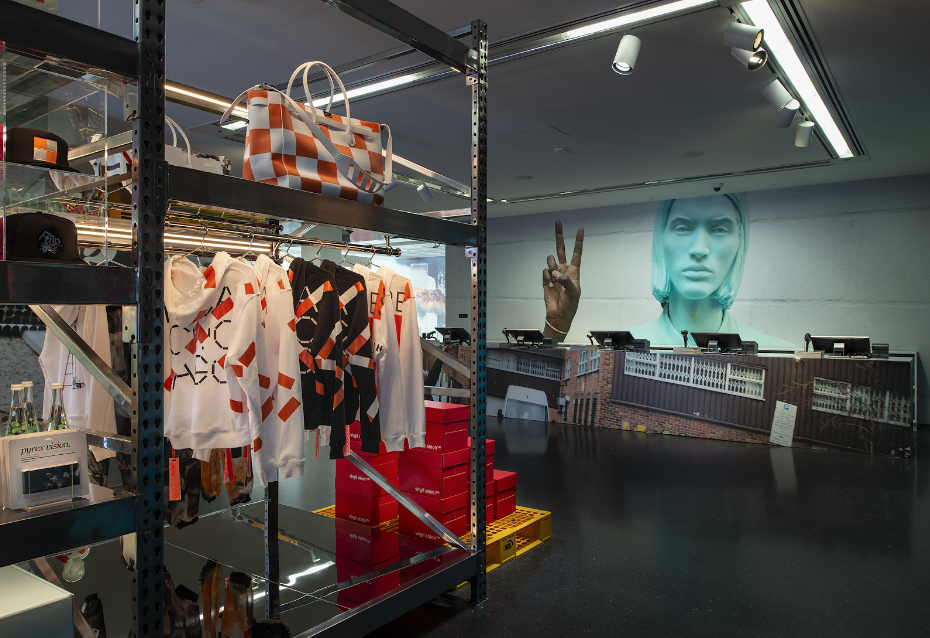
With the infiltration of the Supreme X Louis Vuitton collection in 2017, we witnessed streetwear culture become more mainstream, with some commenting that it peaked. “Figures of Speech” challenges streetwear not as just a fashion style that communicates an identity or personal association, but as an artistic movement. Although it is singled out as the latest fad or trend, it continues to exist outside of what it’s been siloed into. Is it beyond logos and graphics? Is it beyond the value of a sneaker? Or is it personal symbolism that people adopt to make fit for them? On the contrary, the streetwear bubble can’t be on the verge of bursting because we haven’t even begun to explore all of its identities and each remix of the figures of speech. But again, this is about more than streetwear.
“Figures of Speech” now open at MCA Chicago from June 10 – September 22. Follow @mcachicago for all programming surrounding the exhibit and exclusive merch drops.
***

